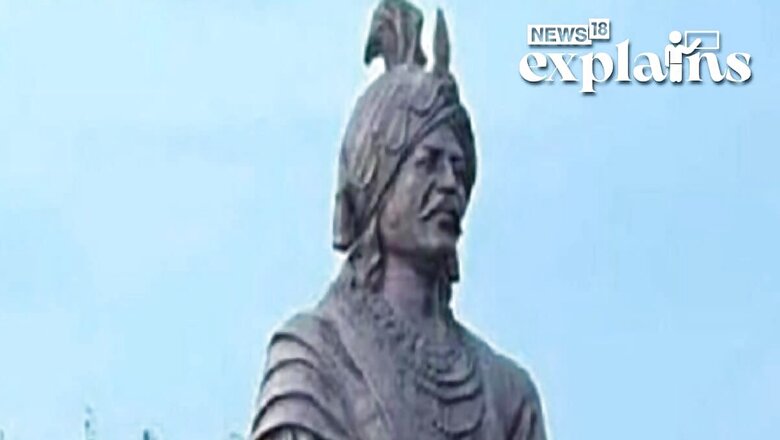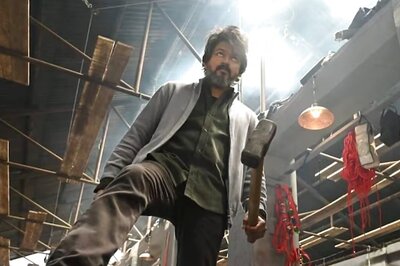
views
The Bhartiya Janata Party (BJP) is currently facing internal turmoil in Haryana. The cause of this dissent was the unveiling of a statue of a 9th-century ruler, Samrat Mihir Bhoj, which resulted in the resignation of approximately 40 leaders from the party in the state. In addition, several villages in Haryana have taken the step of prohibiting the entry of BJP leaders. This situation arose when BJP Kaithal MLA Lila Ram Gurjar and other leaders from the Gurjar community revealed the statue on July 20, and the aftermath led to the resignation of office bearers in protest.
Prohibition of BJP Leaders in Haryana Villages
Following the incident, the controversy surrounding the unveiling of the statue has sparked anger among leaders of the Rajput community. As a consequence, numerous villages in Haryana, predominantly inhabited by the Rajput community, have taken the decision to ban the entry of BJP leaders. This move comes in response to the contentious situation and has been reported by The Hindu.
Understanding the Mihir Bhoj Controversy
The controversy surrounding the statue of 9th-century ruler Samrat Mihir Bhoj emerged on July 20 when the Bhartiya Janata Party (BJP) unveiled the statue. The ceremony sparked a conflict between two communities in the region: the ‘Gurjars’ and the ‘Rajputs,’ according to a report by Mint.
Before the unveiling, members of the Rajput community demanded the removal of the word ‘Gujjar’ inscribed on the statue. Additionally, they protested for the inclusion of the adjective ‘Hindu Samrat’ on the statue. The situation escalated, and the police resorted to lathi-charging the protesters.
Sanjeev Rana, the district head of the BJP’s Kisan Morcha, expressed that their intention was solely to have ‘Hindu Samrat’ on the statue and not ‘Rajput’ or ‘Gujjar.’ However, the police action further intensified the anger among BJP leaders from the Rajput community.
In response to the incident, the administration organized an event to lay floral wreaths at the statue, which further aggravated the Rajput community leaders within the BJP. As a form of protest, Rajput leaders within the party collectively tendered their resignations to Haryana state president Om Prakash Dhanar.
Now, the leaders are demanding clarification from Chief Minister Manohar Lal Khattar regarding the issue and the police’s actions. The controversy has led to significant dissent within the BJP in Haryana.
Understanding Mihir Bhoj’s Historical Significance
Mihir Bhoj (c. 836-885 CE) was a prominent and ambitious ruler of 9th-century India, as stated by Kurukshetra University Professor SK Chahal in a report by Indian Express. During that time, the Gurjara-Pratiharas held dominion over a vast empire, stretching from Kashmir to Gujarat. Mihir Bhoj’s rule saw successful conquests in the regions of Deccan and Malwa.
Notably, the 9th century witnessed a major political struggle for control over Kannauj, as it was believed that whoever conquered Kannauj would become the emperor of the country. This led to a tripartite struggle among three powerful entities of that era—the Gurjara-Pratihara, the Rashtrakutas of Deccan, and the Palas of Bengal. In this intense contest, Mihir Bhoj emerged as one of the most successful figures. He managed to conquer areas in Gujarat and Malwa from the Gujarat-Rashtrakutas. Furthermore, he led a campaign towards Bengal and successfully conquered territories in Gorakhpur from the Palas of Bengal.
Mihir Bhoj’s historical significance lies in his military achievements and successful expansion of his kingdom, which established him as a formidable ruler during his time. His rule played a crucial role in the political landscape of 9th-century India, with his empire encompassing significant territories across the country.
Historical Perspectives on Mihir Bhoj’s Lineage
According to M Rajivlochan, a history professor at Chandigarh’s Panjab University, Mihir Bhoj belonged to the Gurjar Pratiharas, a group that is often considered to have affiliations with both the Rajputs and Gurjars.
To elaborate on the matter, Professor SK Chahal of Kurukshetra University explained to the Indian Express that Gurjars were originally a nomadic tribe in ancient India, with their presence predominantly in regions like Rajasthan and Gujarat. Mihir Bhoj is believed to have hailed from this Gurjar tribe. However, it is worth noting that he claimed the status of a Kshatriya (warrior) for himself. The Pratihara branch of the dynasty, to which Mihir Bhoj belonged, was associated with the Rajputs. In the context of ancient India, it was commonly believed that only a Kshatriya could ascend to the position of a king, and as such, Mihir Bhoj asserted his Kshatriya lineage.
Professor Chahal also adds that as we delve deeper into history, caste identities tend to blur, and the clear distinctions that exist today emerged much later in time. He further emphasizes that the recent controversies surrounding the castes of ancient rulers are a product of modern-day politics and have no direct connection with historical events, as per the Indian Express report.


















Comments
0 comment